Magic the Gathering has been an important part of my life. It is possibly one of the best games ever made and arguably the best trading card game in existence (a statement you only get away with on a MTG blog). I have experienced a bunch of different TCGs over the years but only one has been able to hold my attention as much as MTG. As you have probably guessed from the title, it is the Weiss Schwarz Trading card game (short WS).
I’ve started playing WS about 5 years ago. A friend of mine who owed me money gave me a (half-optimized) WS deck instead. At first, I was not very happy about this. I knew that if I would continue to play this game, it would cost me a lot of time and money and the gameplay seemed a little strange, at least in the beginning. I quickly warmed up to it. At the time of writing, I own about 15 different WS decks and help organize WS tournaments in Burgdorf every other month.
Introduction
WS is created by Bushiroad, a Japanese entertainment company, which produces TCGs (other than WS they created Cardfight!! Vanguard, ChaosTCG, Dragoborne, Future Card Buddyfight and Luck and Logic, just to name a few), videogames and multimedia franchises (e.g. Love Live!, Bang Dream! or Detective Opera Milky Holmes, etc.).
Weiss Schwarz is an anime themed trading card game, but you really don’t need to know anything about the series or game the cards represent. But knowing the characters and moments helps you get into the game. The cards are very well themed and playing with a franchise you know helps but is not a requirement. There are currently 32 different franchices to choose from in the english version of the game. Popular examples are:
- Attack on Titan
- Konosuba
- Sword Art Online
- Gurren Lagann
- Fate/Stay Night, Fate/Zero
- Persona 4 & 5
- Kantai Collection
- Hatsune Miku: Project Diva
- Batman Ninja
- …and many more!
The game exists only in paper. There is currently no way to play online, but a fan-made online program is on its way (maybe, hopefully).
The only format that sees play is called Neo-Standard. In this format, you are not allowed to mix franchises or series as they are called. One can determine if a card belongs to the same series with the card number. So basically, you can’t mix your Attack on Titan with your Fate/Zero cards, but you may mix Fate/stay night cards with the ones out of the Fate/Zero set, as they both belong to the same series. We will look at a few decks later.
Rules
Of course, there are some differences to MTG in the rules. While Weiss Schwarz borrows some elements from daddy MTG, it is far from a copy of it (looking at you, Force of Will (the game, not the card, obviously)). We briefly look at the rules and the differences and similarities between the games. If you already know the rules, you may want to skip the next sections.
Winning and Damage
In WS, you lose if you reach level 4 or win if your opponent reaches level 4. You gain levels by receiving damage. Every time you received 7 damage you will level up. Damage is represented by cards that are revealed form the top of your deck. When you level up, you choose one of those 7 cards and put it into your level zone. If you would have to do that for the fourth time, you lose the game. With the help of some basic math, we can calculate that therefore, you lose the game when having taken 28 damage. Levels are also useful for playing cards. The higher your level is, the better the cards are you can play out. We will come back to levels in a bit.
Let’s talk about the way you receive damage first. Unlike in almost any other TCG, it is forbidden to take notes or track stuff with dice. This is true for counters, which get represented by cards and stock, WS’ equivalent of mana. The same is true for damage. When you take damage, you reveal the top cards of your deck one at a time until one of two things happen: Either you reveal as many cards as you were dealt damage or until you reveal a climax card. If you reveal a climax card, the damage gets canceled and put into your graveyard instead of going to your damage zone (called the „clock“).
Let’s do a few examples: You receive 3 damage. You reveal the top 3 cards one after another, none of them are climaxes. You put the revealed cards into the clock.
Second example: You receive 3 damage. Again, you reveal the top 3 cards one after another. But this time, the second card you reveal is a climax card. When you reveal the climax, you stop revealing cards, even if there is more damage left. You put all revealed cards – the first card and the climax – into the waiting room, the WS equivalent of the graveyard.
Card types
There are three different card types in WS (in contrast to the like 13 there are in MTG):
- Characters
- Events
- Climaxes
Characters
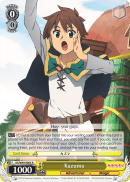
Link to the card: https://en.ws-tcg.com/cardlist/list/?cardno=KS/W49-E003
Characters are like creatures in MTG. They can attack and prevent damage and they are for the most part the main source of damage. In WS they also generate stock, the main resource for playing cards and activating effects. Stock is similar to mana in magic but works a bit different. If you attack with a character, you reveal the top card of your deck, resolve any effects that might trigger, then put the card face-down in your stock. You can spend stock to play out costed characters, events and activated abilities. Up to three characters can attack each turn, so you generate up to three stock per turn, without accounting for card effects. In this way, characters are also like lands.
Events
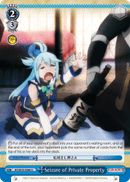
Link to the card: https://en.ws-tcg.com/cardlist/list/?cardno=KS/W55-E096
Events are like sorceries. You play them, pay their cost and do whatever the card does, then put them in the waiting room.
For the most part, there are no instants in WS. There are characters or events with the [counter] symbol (represented by a fist). Those can be played while the opponent attacks with one of their characters. They can only be played that way in the opponents turn in a defensive manner.
Climaxes
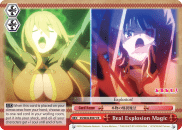
Link to the card: https://en.ws-tcg.com/cardlist/list/?cardno=KS/W49-E067
Climaxes are an odd card type. They also function like sorceries. You play them and they grant a special effect until the end of the encore step, the step after combat, then they get sent to the waiting room. They also combo with certain characters, providing important and powerful effects. But they are the most useful while they are in your deck. If a climax card gets revealed when you take damage, the damage gets canceled, meaning that all the already revealed cards, including the climax, are sent to the waiting room and no other cards get revealed as part of that instance of damage! This is a very important part of the game, so keep that in mind as you continue reading.
How to play out a card
To play a card in WS, you must fulfill three requirements.
- The card must have the same level as you do or lower. If a card is higher level, you can’t play it except under certain condition specified on the card itself or other cards. Climaxes have no level, so you can play a climax at level 0, as long as you fulfill the other requirements
- The cards must have the same color as a card in your level zone or in your damage. There are four colors in WS. Each has a different focus in terms of mechanics, although they overlap more than in MTG. This requirement is a non-issue in mono-colored decks but four colors are very greedy and depending on how you build them, hard to pull off. The only exception are level 0 characters. They have a color but you don’t have to meet the color requirement to play them.
- You must pay stock. Stock is the equivalent of mana in MTG. Each time a character attacks, you reveal the top card of your deck, resolve any effects resulting from them and put them face-down into stock. You can then pay stock to play cards and activate abilities. Characters and Events can have a stock cost but don’t have to. Climaxes never have a stock cost. Activated or triggered abilities can cost stock too. Only characters can have activated abilities, as they are the only permanent in the game (the term “permanent” is not an actual thing in WS).
Deckbuilding
Decks in WS consist always of 50 cards. 8 of which must be climaxes, no more, no less. You can play up to 4 copies of each card. You don’t have to play a certain number of events or characters, but it is highly advisable to play at least 30 characters, ideally even more. It is not uncommon to see decks with 42 characters, 8 climaxes and no events.
The playmat
Next up is the “battlefield”. The playmat for WS looks like this
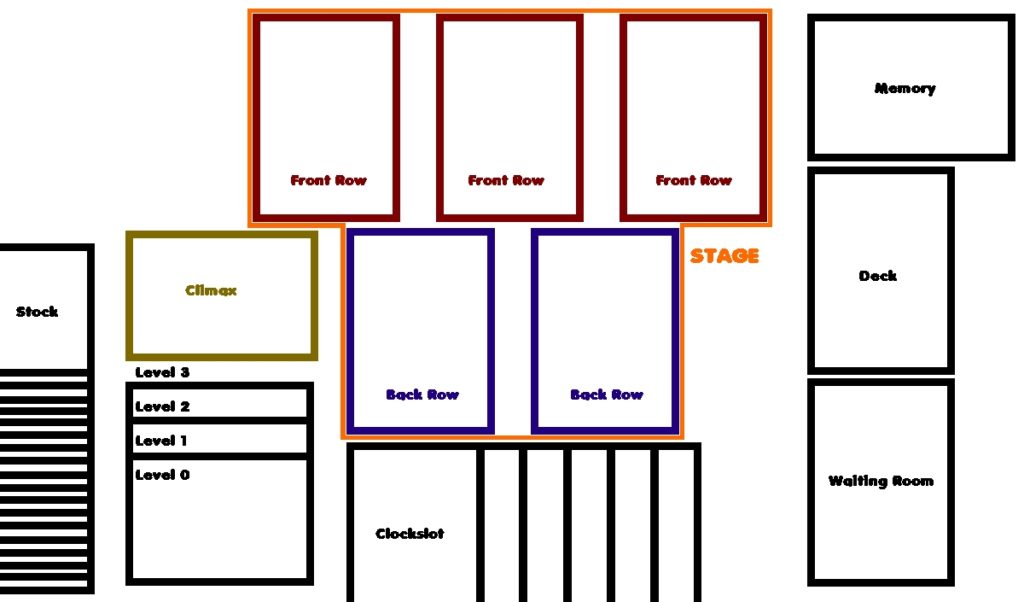
There are a few parallels to MTG. The deck is obviously face down in the deck zone, the waiting room is like the graveyard face up, the memory zone is the equivalent of the exile zone and the hand zone (not visible on the play mat) is also hidden.
While the right side of the playmat might be similar to MTG, the left side contains some unique elements. The area labled “stage” is where you put your characters. You can only have 5 characters at the same time on the field (if not any are used as markers). The characters in the front row, also called “center stage” can attack and be attacked while the characters in the backrow cannot attack or be attacked and usually fulfill a support role. Characters in the front row can fight against the opponent’s characters right across them, so positioning matters a lot.
The “clockslot”, or clock for short is the “damage zone”. The cards that get revealed from the top of the deck while taking damage go there. To the left is the level zone, where the cards go that get chosen while leveling up. The climax zone is where the climax cards remain that get played out. You can only play one climax each turn.
At the far left is the stock. Whenever a character attacks, the top card of the attacking players deck gets revealed and the symbol on the top left of the card gets checked. High level characters have a symbol, which adds another damage to the attack. Low level characters and events don’t have that symbol. Climaxes have special symbols, which trigger a special effect upon being revealed. These effects are unique to their colors, each color has two of them (update: it has been revealed that there will be a third symbol for yellow with possibly more to come for other colors). The stock itself is face down. In WS, you are not allowed to take notes, so remembering what you have in stock is a fun little minigame.
Turn order
The general procedure of a turn is similar to a turn of MTG with a few notable differences. The turn starts with the stand up phase, the equivalent of the untap phase in MTG. Characters can have three different positions a character can have: [stand], equivalent to untapped, [rest], equivalent to tapped and [reversed], which is the same as the character “being dead” and reversed characters will be put into the waiting room after the battle phase, but as long as they are rested, they still are on the battlefield, which changes some things. Their effects still apply and other effects still count them as being on the battlefield. No removing lords during combat!
After untapping, you draw a card. Next up, there is an additional phase called the clock phase. In this phase, you can take a card from your hand and put it into your clock, essentially dealing one damage to yourself. If you do that (it is optional) you draw two cards. In WS, you can basically draw two cards a turn with some card filtering in between.
The next phase, which is the main phase, is very similar to MTG’s main phase. You can play your characters or events, move them in any way possible, exchange positions and activate abilities. In WS activated abilities can only be activated during the main phase. In contrast to MTG, there is no second main phase after the combat.
The attack phase differs quite a bit from what happens in a match of MTG. You attack with each character separately, so you go through each of these six steps with each of up to three characters.
Attack Declaration Step: You choose one of your characters in the front row and [rest] them. This character is now attacking. You also choose the way they are attacking. You can either:
- Direct attack: If there is no character in your opponent’s front row across from your attacking character, your character will deal one more damage, so having characters on your side of the battlefield on your opponent’s turn has its benefit.
- Frontal attack: If your opponent has a defending character, you can choose to attack them head on! In this case, your and your opponents’ character will do battle.
- Side attack: If you want to avoid battle and your opponent has a defending character, you can instead side attack. The level of your opponent’s character will be subtracted from the damage your character would deal. So side attacking a level 0 character has no damage penalty, but side attacking a level 3 character will probably not have much benefit in terms of dealing damage. But you will still get a stock!
Trigger step: This is where the card from the top of your deck gets revealed, effects get resolved, if necessary, and the card is put face down on top of the stock.
Counter-attack step: If you frontal attacked an opponents character, your opponent can now play a counter card. Most of them function like a pump spell that work only defensively. If you did not frontal attack, you can skip this step.
Damage step: Your opponent now takes damage, if your character even deals damage. He or she reveals the top card of his or her deck until a climax is revealed (and the damage canceled) or the number of cards that equals the amount of damage dealt are revealed and the damage is taken.
Battle step: If you frontal attacked your opponents character, the characters now do battle. The power of both characters get compared and the character with the lower power gets reversed. If both characters power are equal, both characters get reversed.
You repeat these phases for each character you want to attack with (ideally, you do this with each character in your front row to generate more stock, even if they would not deal damage).
After you attacked with all your characters, the encore step follows. Encore is basically regenerating your characters. You and your opponent now have the chance to save your reversed characters. The encore rule states that you can pay 3 from your stock to save one of your characters. That character will go to your waiting room and return to the stage rested. There are also characters that have other encore effects, that are more cost-efficient, like discarding cards or taking a damage. If you are holding more than 7 cards in hand, you now have to discard cards until you only have 7 cards in hand. After that, you pass the turn.
Additional rules
WS has a few additional rules that differ quite a bit from MTG. I will quickly list them here.
Mulliganing
Mulliganing in WS differs quite a bit from any MTG mulligan rule. It’s most similar to the old commander mulligan. You draw 5 cards, then choose any amount of cards you don’t want or need. You put them into the waiting room and then draw as many cards as you just discarded. Yes, dredge would be utterly busted in WS, but thankfully there is nothing even close to dredge in WS. We will look in the game design part into it a bit more.
maximum hand size
Like in MTG you maximum hand size is seven.
Empty deck
We all know and love it: Milling, the process of putting cards from the top of a deck into the waiting, is a more or less viable strategy in MTG. If your library is empty and you have to draw a card, you lose the game. In WS, you just reshuffle your waiting room instead and then take one damage that can’t be canceled. This is actually one of the most important rules of the game, as you breeze through your deck quite quickly. More on that in the next chapter.
Game design and gameplay
Now that we know roughly how to play the game, let’s look at the game design and how it influences game play.
WS has a comparatively „disciplined“ game design. In MTG, the entirety of the design space is used, most of the time with regard of the power level. In WS, an entirety of effects and card types are not used in the game, which creates a different dynamic than in other TCGs. Here is a incomplete list of effects, that are either non-existent, rare or straight up bad in WS:
- Discard spells: There are no effects in WS that let the opponent discard cards. Cards in your hand are safe and can usually not be interacted with. In contrast, there is a plethora of cards that let you discard your own cards.
- Counter spells: There is no way to intercept your opponent’s cards when they are played from hand.
- Taxing and “cheapening” effects: There are only a few ways to modify stock costs for characters or events. But there are effects that put characters into play from hand, the deck or the waiting room.
- Removal spells and sweepers: Such effects exist, but they are rare, expensive to play out and not very effective. Because you can attack the opponents character in their front row, it is not really necessary to remove them beforehand, except if you want to increase your damage. An exception is removal for backrow characters, as they can’t be attacked. These effects are also not cheap but can be worth it. The KanColle Abyssal deck is built around removing the opponents back row over and over again, for example.
- Graveyard hate: In a game where you reshuffle your graveyard into you deck, a rest in peace style card would make the game unplayable. There are some “remove a card from a yard” type of effect, but they have some steep costs to them and typically don’t see play.
How does the omission of these types of effects affect the gameplay and how is it even possible to have healthy gameplay without many counter and/or hate effects?
The answer lies in the way the format neo-standard is organized. Remember that you can only play cards from the same series, which limits your card pool significantly. You are basically playing a standard deck, where there are different standard card pools available. This way, there is a smaller chance of a deck gaining too many “busted” effects and thus, less counter play is necessary.
Another thing is how the game is designed. There are no infinite combos in WS. There are essentially no decks that would be considered “unfair” in MTG and the decks that are considered combo decks are basically just hard to set up synergies, that have a high pay-off.
The gameplay of WS can be considered pretty fair but also very swingy and tempo-based because of following factors:
- As mentioned, there are no infinite combos or other “oops, I win” scenarios. Almost every deck is a „fair“ deck in MTG terms.
- You are automatically forced to interact trough combat, so you it’s hard to play a “ships passing in the night” game plan, although it’s possible.
- Because damage can be canceled, you can’t just one-shot or rush your opponent down. You rather have to deal a large amount of small to medium size “damage-packages” of about 1 to 4 damage, to reliably get the damage to stick and not cancel. Also, attacking with 3 characters a turn can generate a lot of damage that can be canceled or taken, depending on how well your deck is set up and how lucky you are.
- You must concern yourself with card-advantage. Every turn, if your opponent managed to dispose of all of your front row characters and you want to play a climax too, you basically have to get 4 new cards each turn. But you only get to draw 2 cards each turn with the help of the clock phase, so where do you get the two remaining cards from?
Decks
Soul rush
One of the most infamous archetypes, which is basically the equivalent of aggro in MTG. The plan is to “cheese” the opponent by maximizing the damage of your characters with +2 soul climaxes (soul is another expression for damage) in the early game to get a lead and then finish the opponent off with a strong finisher yourself. There is a strong risk involved in this plan, as it is entirely possible that all of your damage gets canceled. Playing +2 soul climaxes is a high risk – high reward play. In my opinion not a great strategy, as your opponent almost has to stumble or get unlucky and this can also be punished by other climaxes that increase soul.
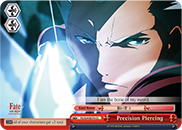
https://www.encoredecks.com/deck/jgFoudYvI
Coin flip
Another very aggressive deck archetype, the coin flip strategy tries to apply much pressure by playing many level 2 or level 3 characters. These cards grant an additional soul when revealed while attacking, so you are much more likely to get an extra damage while attacking. The tricky part is the early game. These decks play about 8 to 12 level 0, while a “normal” deck plays about 14 to 21. They circumvent this problem by playing cards that either profit from having many characters with high level in the deck or from having a high soul count. For example, “Battle continues” Lancer bounces itself back to your hand if the top card of your deck is level 2 or higher. These “random” mechanics give also the deck its name.
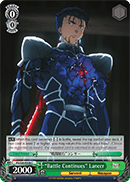
https://www.encoredecks.com/deck/Hb7E9oJgm
Big combo
Like I mentioned, in WS, there are no true combo decks like in MTG. The closest equivalent of this are decks that focus on a very strong finishing combo that require multiple conditions for it to work. These decks usually try to stay en par with their opponents while gathering the necessary combo pieces along the way. While fragile and difficult to pull off, these decks have great finishing power. Kaleidoskope Illya tries to assemble at least one of each “Kaleidoskope” Illya and Miyu, needs to play one copy of “class card saber” and to discard another one and then also needs to mill a card from the top of your deck that is level 1 or lower. Only then will the entire team deal 1 damage on attack, which does not sound like much, but is a great finishing effect.
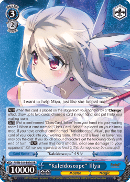
https://www.encoredecks.com/deck/2ANZtBJ1g
Solitaire
Solitaire deck do precisely what their name says they do: They play their own game, basically ignoring the opponent. Most decks often feature cards that need to defeat opponents’ characters in battle to gain resources or trigger effects. Solitaire decks play cards that grant them similar effects without needing to interact with the opponent. These decks are great in an environment with many denial decks, which we will talk about in a minute. They suffer from the fact that their effects are often not as powerful as the opponents and can fall behind a little. This BD Yukina list ignores the opponent until the endgame, where „Birdcage Diva“ Yukina Minato has to reverse. But with the help of „Bride for a day“ Saya Yamabuki, the opponent can’t even interaction with a counter.
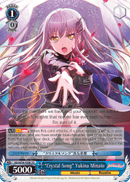
https://www.encoredecks.com/deck/eN7DPhKFr
Ramp/Stock charge
Ramp in WS does not exactly work like in MTG. In WS, you can use many effects to significantly increase your stock. This built up stock has multiple purposes:
- It helps you compress, so you take less damage and have more time to set up the later levels.
- In the late game, you can use the stock for powerful effects to finish off your opponent.
- It helps you make your deck smaller, so you can go through your deck more easily and have more control over it.
This Konosuba Magic Deck follows a multi-step plan to get where it wants to be. It tries to charge its stock with its level one climax combo then use that stock to deal a large amount of damage in the late game.
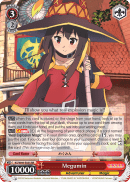
https://www.encoredecks.com/deck/6sns0r7eJ
Denial
Where resources are to be gained, they can be denied. Trying to deny reverses is a common strategy in WS and no deck is more obnoxious that Attack on Titan corps deck. Level 1 Eren was very oppressive when he was released, but right now the English meta has adjusted. Still AOT remains a strong option, especially against the Konosuba and other strategies that rely on reverses.
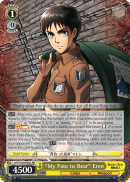
https://www.encoredecks.com/deck/feR9EotiP
Walls/Standby
Another denial approach is to just make your characters so big that your opponent can’t get over them. Those characters are expensive and need some “cheating” to get into play cost efficiently. That is where the Standby climax comes into play. It says that you can choose to put a character rested into play that is one level higher than you. Prime targets are characters without come into play effects (those only trigger if played from hand in WS) that are expensive and with high power. Those are then backed up (literally) by a bunch of counter cards that will buff your already giant characters if your opponent can get over them somehow.
Tae shows no interest (in your puny level 1s), Twin Problems Sayo Hikawa and Tae Hanazono are the prime targets to get with your standby climax. Your game plan is to always have a huge amount of power on the board, so your opponents can’t reverse your characters. The disadvantages of this strategy are the lack of “burst damage” as the standby climax does not add additional damage to your characters if played from hand and the lack of alternative card advantage. When your opponent manages to destroy your wall or bounce your expensive characters back to hand, you can fall behind pretty easily.
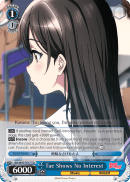
https://www.encoredecks.com/deck/MpeqO3h6I
What’s good and what’s bad?
So now that you know roughly how to play and what deck types there are, should you play WS? Not an easy question to answer. I’ll give you a rundown of the good and bad points of the game. Of course these are only my opinions, so take them with a grain of salt.
The good
- Gameplay: As mentioned above, the gameplay in WS is much more „even“ than in MTG. This is due to the less diverse but more disciplined game design of WS. There are few mechanics that hard-counter strategies, which leads to a more pleasant game expirience. I never expirienced the situation when you stopped playing against someone, because their deck hard-counters yours. The games also last longer, which forces you to think one or more turns ahead. You can’t really rush down your opponent reliably so you are forced to „play the game“. There are also no instant-win combos, every victory has to be fought out through good old combat and dealing damage.
- Fewer formats: The format jungle in MTG can be intimidating sometimes. You have to keep up with a bunch of metagames and pay attention to what cards you need to trade for in the new set. In WS, you either play English, Japanese or both. If you own a deck in both languages, you can participate in (almost) any WS tournament.
- Updating decks: As mentioned before, in MTG, you have to pay attention to every new set and aquire the new relevant cards that are relevant to your decks. This can get very expensive, depending on the format. WS functions like a more affordeable modern or legacy. Decks cost ranges from 50 to about 500 Dollar/CHF and you only ever have to update them, if a new set for a series that you play gets released. WS is a bit friendlier to our wallet than other card games in that regard.
- Brewers paradise: The smaller, more uniform card pools and fewer formats seem like they don’t lend themself well to brewing. But because of the smaller player base, the less tilted gameplay and some sets being criminally underexplored, WS is a brewers delight. The fact that decks are more modular than in MTG also helps, as you can easily swap cards or entire card packages with ease. Decks also don’t get „solved“ that easily. Even some of the „most solved“ decks, like AOT Corps took more than a year to arrive at a „best“ list and even now there is some contention about some cards.
- Card quality: Pale cards, misscuts, bad cardboard quality. MTG is often plagued by bad card quality. In WS, I’ve seen a misscut. Once. As a picture.
- Non-games: In WS, you still can get „screwed“ by the game, but they are far less severe and you can still come back from them with certain tools.
The bad
- Organized play: MTG and other, more popular TCGs offer much more opportunities to play, be that competitive or in general. In WS, you are lucky if you have a store nearby, which supports the game. Even if you got one, there is no FNM or other regular event. Oh wait, there is. The shop championship. Once a year. Thanks Bushiroad!
- Community: Compared to MTG or Yu-gi-oh!, the community is relatively small. In Switzerland, for example, are less than 20 active players, as far as I can tell. Because of this, tournaments are mostly really small and usually don’t exceed 8 players. Other than that, the community is similar to MTG or other TCGs. It’s male dominated and the average age is a bit over 20. Because of the theme of WS, most if not all players are Anime fans. The lack of players can in part be attributed to the specific group the game targets: TCG players and fans of Anime.
- Card availeability: Buying cards in MTG is often a question of how much are you willing to pay. You should be able to get most of the cards if you are willing to throw enough money at vendors. In WS, you first have to find the cards. There are only a few bigger platforms, where you can buy singles (MKM has a WS section, which is criminally underpopulated). If you want to get your cards reliably, you have to buy them within a few days of their release in the US. Otherwise, you’ll find yourself on goose chase across multiple shops. I’ve heard from MTG players that they kind of like the idea of not being able to buy every card always. But once you’re there, it sucks, it really does.
- English translations: There have been a few erratas in MTG, mainly for older cards, mostly to simplify them. In english WS, expect erratas for every set and multiple cards. This has been a problem for years, but for some reason, the translations seemingly don’t get double checked.
- „Spicy“ accesories and sets: Sexism is still a social problem and does not stop at TCGs. I have to commend MTG for representing a broad variation of people on their cards. MTG accessories like sleeves rarely feature demeaning or overly sexualized poses. In WS, the cards themselves sometimes feature „questionable“ artwork. This heavily depends on the source material for the set, with most sets being perfectly safe. In other sets, a convenient ray of light or gust of steam censor certain cards, in other sets, especially japanese exclusive sets don’t give a damn and openly portrait nudity. Sleeves and playmats are getting sold in facebook groups that directly relate to the game. I guess you can also buy those assecoires for MTG, since the card size is the same, but I’ve only seen such products in relation to WS.
Should you play Magic and/or Weiss Schwarz?
The answer varies heavily from person to person. If you favor limited, you’ll get very little out if WS. There is no limited format and if you’re not in the slightest interested in owning decks, you’re in the wrong place.
If you are a grinder and want to participate in as many competitions as possible, WS will also dissapoint. The lack of competitive tournaments and the distance you would have to travel to get to the few there are is not very motivating.
If you are a brewer, you’ll love it, as there are far fewer players that help „solving the format“. In addition, even if a format were to be „solved“, certain off-meta sets are still comparatively unexplored and could be a great place to craft your own deck ideas.
Lastly, WS is a great time for just playing. It’s a good alternative to playing constructed between rounds, since there are few scewed matchups and games where you get screwed. It also accompanies MTG in not being as „busy“ and something that needs your attention. WS tournaments themself also offer a fun expirience. The matches are hype and the community is welcomming.
If you have questions, you can write them in the comments or contact me on social media:
Twitter: @thedjab
Discord: TheDJAB#4886
Facebook: https://www.facebook.com/maeberhard

It looked interesting when you were playing, but the aesthetics totally put me off. No thanks.
I have played a fair number of TCG but to me, WS is quite unique. The concepts of Card Advantage/Field dominance is quite different from any other game since even level 0 can still get damage in (and this game is a damage race after all). This is very troubling for MtG players.
I’ll just react to the pro & cons sessions(would be too long otherwise).
PROS:
Gameplay/Non games –> agreed that in a game of WS, both players get to really play the game. Even if you deck is „countered“ by the opponents, you should always be able to do a little something (attack). The level mechanic also makes it that, very often, you’ll end the game with both player at L3
Fewer formats –> Mostly agreed, tough the JP versus US difference does exist, especially in France for some reasons… Tough overall I don’t see it being too much of a hurdle when the player database is big like for mtg (people enjoy different format, some only play limited for example)
Updating decks –> 100% Agreed
Brewers paradise –> I disagree with this one. Most of the times, the cardpool is too small and it is easy to spot the best cards. It is even worst that Bushiroad very often archetypes within a set, basically dictating you what to play. There are a few series that have large cardpool and are opened tough (Bang Dream, Kantai, SAO,…)
Card quality –> I find MtG quality to be much higher (WS cards fail at bend test), illustrations are also originals, whereas in WS you have to deal with ugly screenshots sometimes…
To me, the biggest appeal of this game are: the licence (let’s be honest, it’s what brings players to the game), the unique gameplay (which is all about deck control and probabilities), the fun it brings and finally accesibility (to be honest any TD+ x2 can decently compete against a meta deck imo)
CONS:
Organized play / Community –> Can’t argue that… doesn’t help that Bushiroad just don’t seem to want the game to be really competitive (BO1 format is an example)
Card availability –> Agreed, tough we are starting to get big name shops for US, but JP is still a big pain.
English translations–> Annoying but can cope with it I guess
„Spicy“ accesories and sets: I do admit that the visual of the game can just throw people off.
I am surprised you didn’t touch on the „luck“ factor. It’s very easy look at this game and say it is all about chance. Triple cancel lethal into kill bla bla bla…More dedicated player will tell you this game is actually the opposite but still that idea is very dominant.
The economics of the game is bad I think. In my country, people mostly play JP, which local shops do not stock on. Combines this with the serie system where the most efficient thing is to buy the playset when it comes out, that means there are very few opportunities for trade and that the tournament price (usually boosters) don’t interest people. That means they would rather freeplay for free than pay to play a tournament…. Lack of any limited format further enhance that and have the side effect of making a fair number of cards completely useless.
I do think WS is a great game to chill and/or if you want to see something new. If you want to be serious about a tcg, i am not so sure…
Thank you for taking your time to read the artikle and leave such a big comment! I would like to respond to the critisisms. I think they are all valid.
The „brewers paradise“ really depends on the series you’re playing and even then, the brews will probably turn out worse than the meta decks of the series. With some series, this is almost impossible.
About card quality: I was more thinking about the card material and the foiling. MTG players are all too familiar with the curly foils and WS cards are in general much sturdier. But I see what you are saying, the original artwork is really nice and the quality in WS depends also on the sets (R.I.P. Haruhi).
I did not touch on the luck factor because I personally don’t think it’s that bad as people make it out to be. It’s also a big controversy in the WS community, so I did not want to light that fire here too.
The economy is really bad, yes. Could have at least mentioned that in the card availability section.
Thank you again for reading!